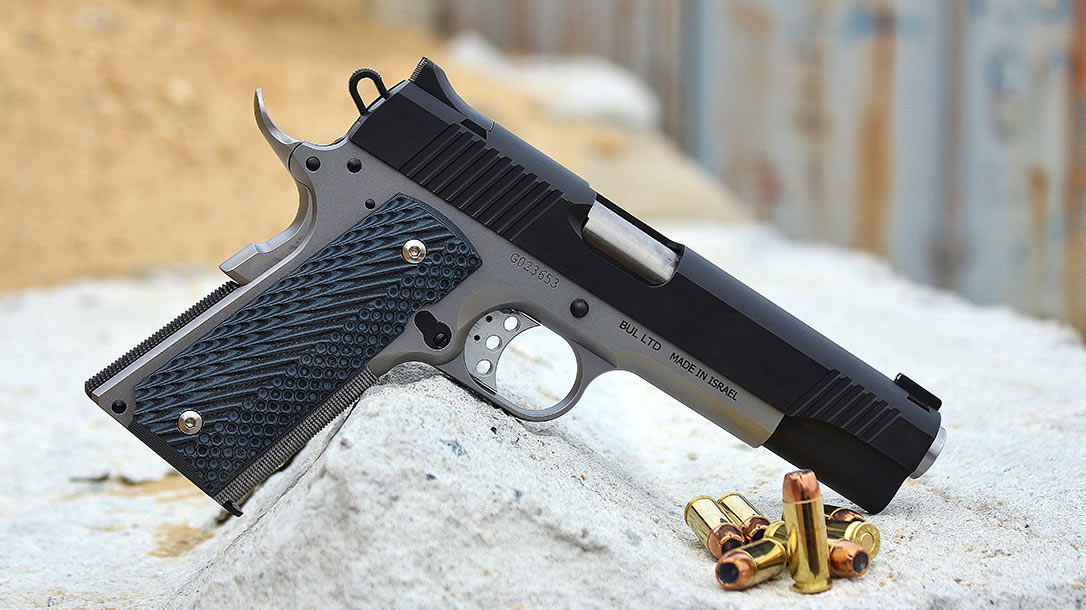Handgun shooters have quested after a cartridge that could deliver .357 Magnum ballistics in a semi-auto, pretty much since the day the round was invented. The answer came in 1983 in the form of the 10mm Auto, developed by none other than Lt. Col. Jeff Cooper of Gunsite fame. While the round delivered everything it was supposed to, initial pistol offerings just weren’t up to hosting it. Magnum Research has an answer for that with its G Model 1911.
The Magnum Research G Model 1911
The most common complaints were that the guns were just too large in the hand, and thus recoil was unmanageable. Well, we figured out what to do in this situation more than 100 years ago. As the human hand hasn’t changed, the 1911 still remains one of the best platforms to mitigate recoil.
Magnum Research knows a thing or two about recoil as well as how to tame it. So, it was only a matter of time until it threw its 10mm hat into the ring. That hat looks strangely like a new G Model 1911.
Advertisement — Continue Reading Below
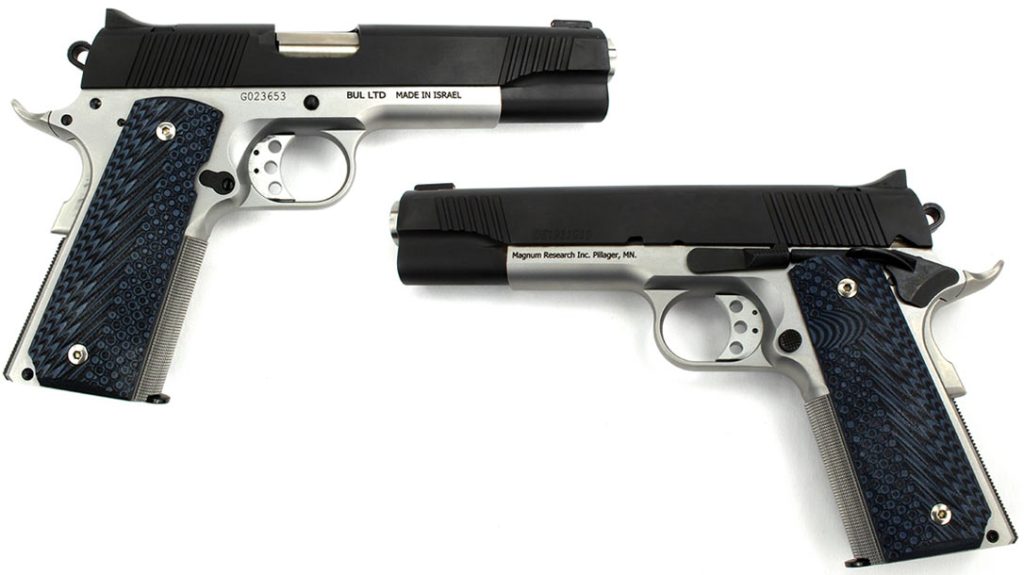
Meet The G
Magnum Research’s G Model 1911 represents the original full-sized government version of the iconic pistol. The 5.01-inch barrel and full-length mag grip make for a superbly balanced pistol that is heavy enough to dampen recoil and leaves plenty to hold onto.
The new 10mm version retains the conventional single-stack magazine. Likewise, as this cartridge is much thinner than .45 ACP, it affords an extra round without having to move to an extended baseplate.
Advertisement — Continue Reading Below
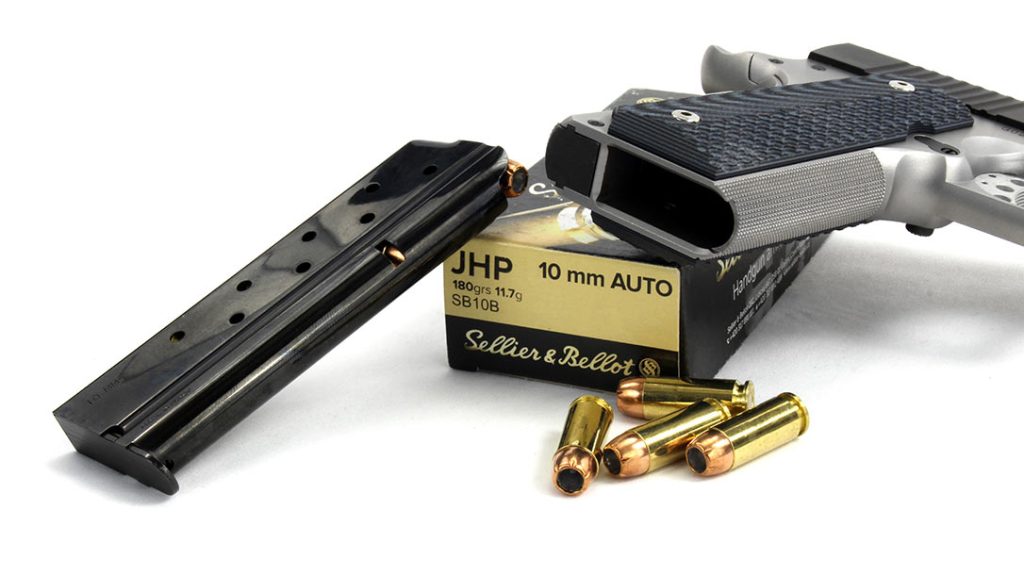
As the first writer to get a sample of the new G 10mm, I was lucky enough to get one of the two-toned variants from a very limited run. This version features the same matte-black slide but with a stainless-steel frame.
Both models come with a flat main-spring housing that is cut with some fine stippling. It also comes with front-strap stippling and G10 stocks. These features crank up the 1911’s controllability to an 11. This makes this one of the softest shooting “magnum” caliber handguns available.
Advertisement — Continue Reading Below
Holstering the Magnum Research 1911
I was eager to carry this gun at some point and wanted to have a holster for its initial testing. Yes, it’s large, but it wouldn’t be a deep-cover carry for me. No, I was interested in it as a trail gun or something to take out for the later days of deer season. Particularly if I already have one tag punched.

The rig I selected for the job was the DeSantis New York Undercover shoulder holster. This classic design doesn’t interfere with whatever is on your hip. In addition, it has zero chance of digging into your unexplained dad bod.
Advertisement — Continue Reading Below
In the interim, I dry-fired the gun a bit. I also put the trigger on my Lyman gauge to measure a clean break at just 4 pounds, 9 ounces. Once the holster showed up, I adjusted it and gathered up ammunition from Hornady, S&B, and Remington—they’re baaaaack. In addition, I packed the car full of Allen’s Steel IPCSs to see how good its AR500 really was.
On The Range
As 10mm is a true multipurpose cartridge, the ammunition that I selected included an inexpensive plinking round, an all-copper hunting round, and a dependable defensive round. All of these rounds performed well, and although the Magnum Research was pretty, she was actually a cheap date.
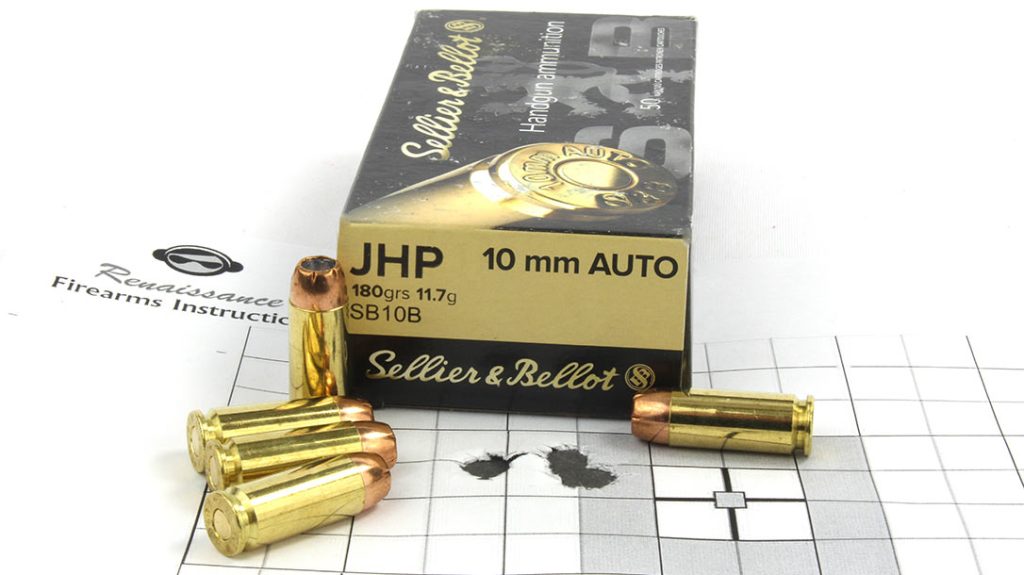
Advertisement — Continue Reading Below
The inexpensive S&B ammunition produced one of the best 15-yard handgun groups that I’ve ever shot. If my buddy didn’t confirm the paper movement, I would have thought something wild was going on (like tumbling).
The only wildness was that this pistol put four rounds into the same hole and put the fifth less than an inch away from the others. The Remington ammunition produced some larger groups. But it’s important to understand that these were built for power, not target work.
The Hornady Custom 10mm XTP load is also built for game. Specifically, the two-legged kind that is native to alleys and parking garages. These groups landed somewhere in the middle and were surprisingly the softest shooting of the bunch.
Advertisement — Continue Reading Below
With the remaining ammunition, I fired at some of Allen’s new 50% IPSC targets to get a real-life feel for recoil, recovery, and transitions. Sure, it had some muzzle flip, but it was more of a gradual rise than a snap. Honestly, it wasn’t very different from shooting .45 ACP.
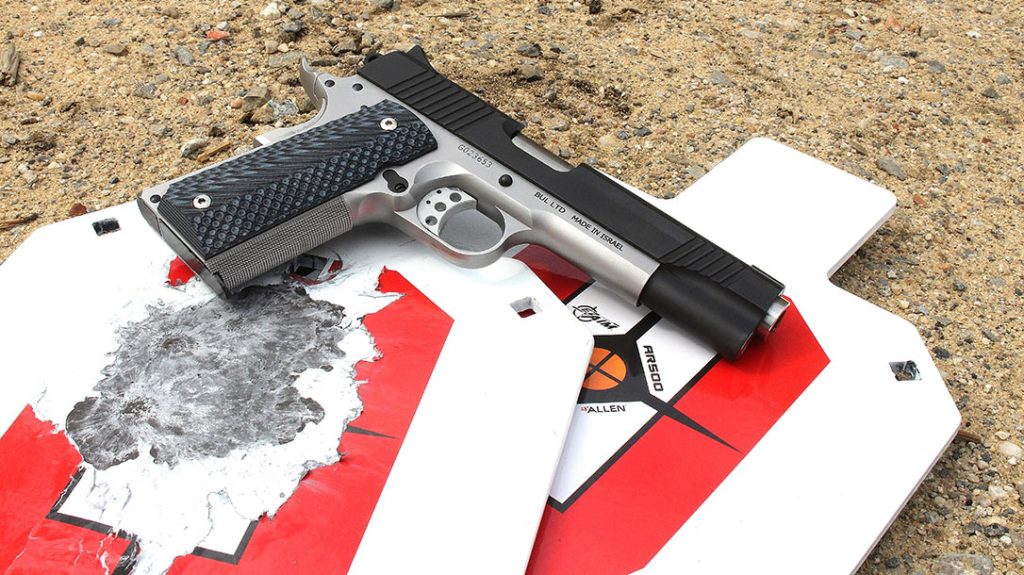
With each shot, I was able to keep both hands where they started without having to resort to gorilla gripping. Even double-tapping the target wasn’t out of the question. Best of all, the gun didn’t suffer from 1911-itis, where they cough and choke on every fiftieth round. In fact, there was nary a malfunction to speak of.
Advertisement — Continue Reading Below
Parting Shots
After returning home, I decided to field strip the pistol to get a better look at the moving parts. Disassembly is a little different from a standard 1911 as this one is built to be bushingless.
After ensuring the magazine is out and that the chamber is clear, the slide must be retracted until a special hole is visible on the guide rod. At this time, you must insert the takedown tool into it to relieve the spring tension while you remove the slide stop and pull the slide and barrel off of the front of the gun.
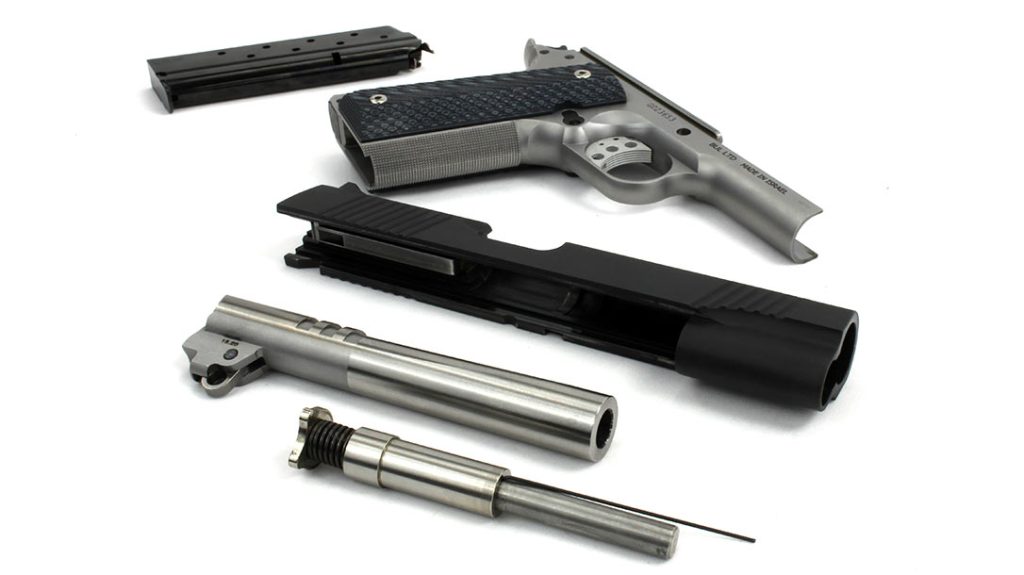
Advertisement — Continue Reading Below
Once removed, I realized that a standard 1911 slide was used. The gap between 10mm and .45 was filled by simply beefing up the barrel. This is genius as it increases accuracy and cooling ability while reducing production costs. Reassembly was as easy as reversing the steps and pulling back on the slide until the takedown tool dropped free.
My overall experience with the Magnum Research 10mm 1911 was incredible. Harnessing a heavy-hitting cartridge without paying the price of excessive recoil is just plain fun to do.
I feel that if guns like this were around in the early 80s, this cartridge would have caught on a little better. Thank God for second chances because the 10mm is experiencing a rebirth. And this Magnum Research offering is certainly going to perpetuate its comeback.
For more information, please visit MagnumResearch.com.
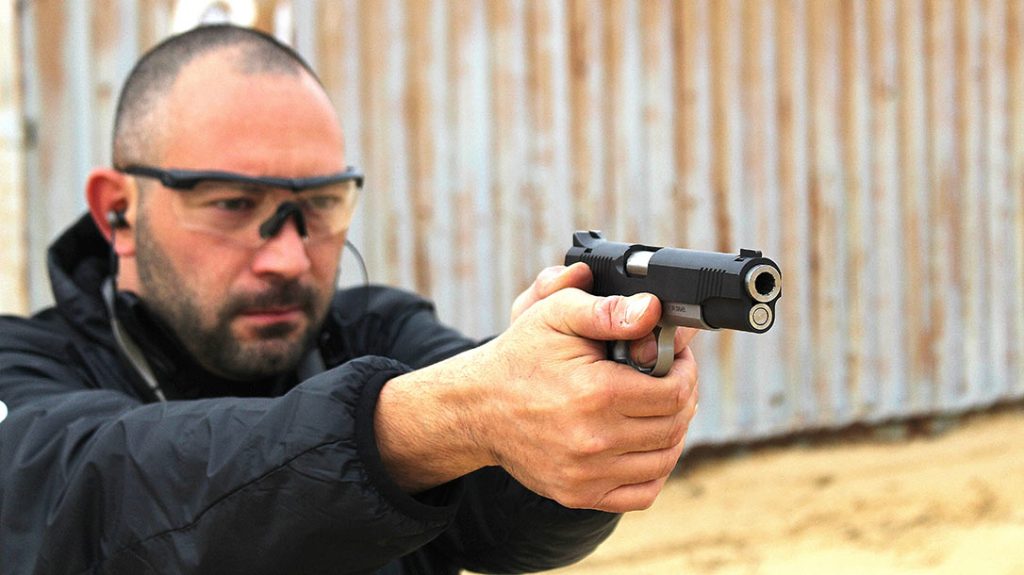
Magnum Research 1911 G Model Specs
Caliber: 10mm
Barrel: 5.01 inches
Overall Length: 8.63 inches
Weight: 36.2 ounces (empty)
Grips: G10 (black/gray)
Sights: High-profile, adjustable rear, dovetailed front
Action: Single-action semi-auto
Finish: Two-toned (matte black available)
Capacity: 8+1
MSRP: $938
Performance
| Magnum Research 10mm 1911 | |||
| LOAD | VELOCITY | ENERGY | ACCURACY |
| Sellier & Bellot 180 JHP | 1,205 | 0.81 | 1.21 |
| Remington HTP 155 XPB HP | 1,176 | 2.76 | 3.14 |
| Hornady 180 XTP | 1,072 | 1.31 | 1.79 |
Bullet weight measured in grains, velocity in feet per second (fps) by chronograph, energy in foot-pounds (fpe)and accuracy in inches for best five-shot groups at 15 yards.
This article was originally published in the Combat Handguns May/June 2022 issue. Subscription is available in print and digital editions at OutdoorGroupStore.com. Or call 1-800-284-5668, or email subscriptions@athlonmediagroup.com.
